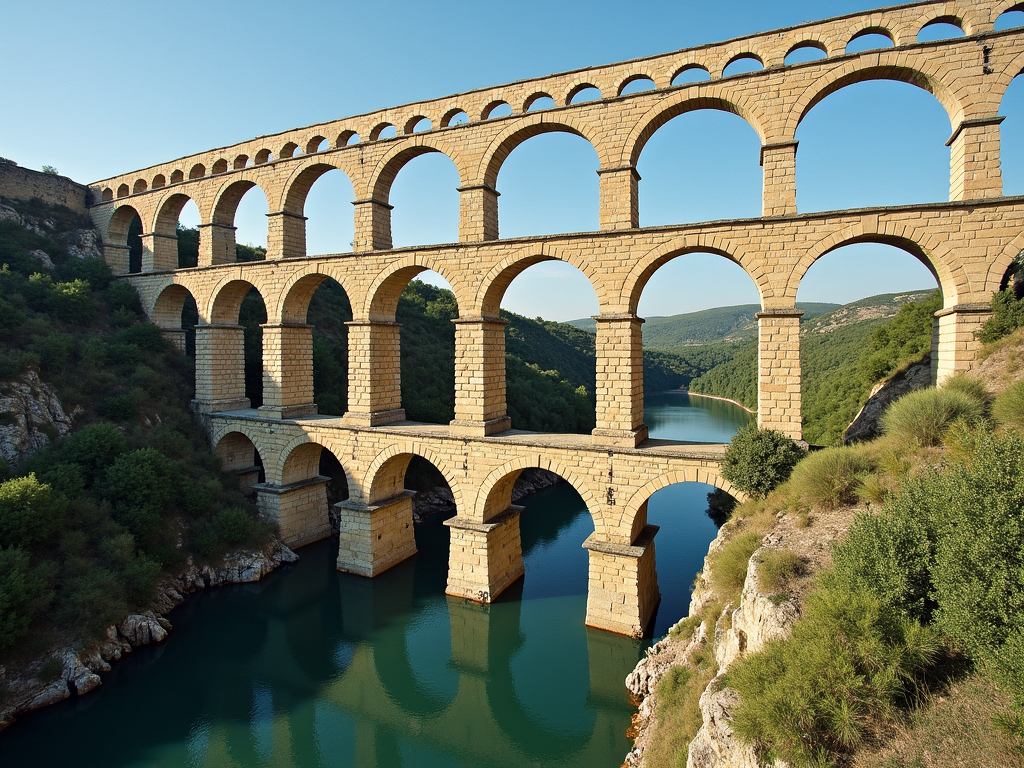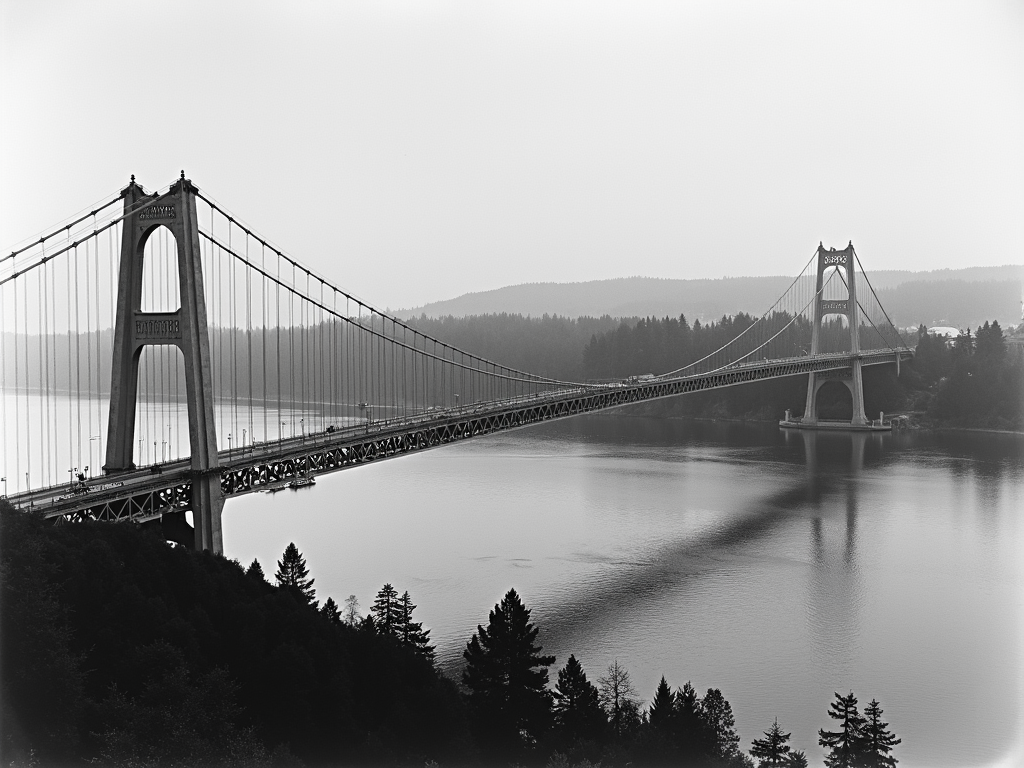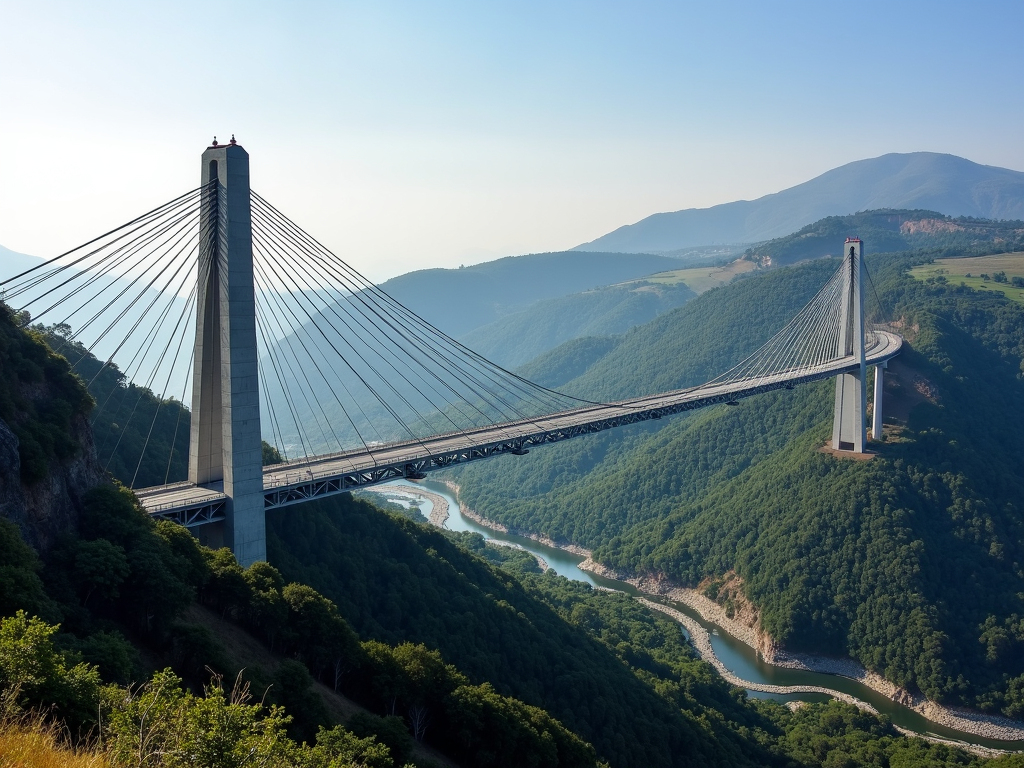Bridge Design Through the Ages: Tacoma Narrows and Beyond
The history of bridge design is a testament to human ingenuity and the lessons learned from failures. The Tacoma Narrows Bridge collapse in 1940 marked a turning point, leading to advancements in structural engineering and design principles.
A Brief History of Bridge Design
Bridges have been a crucial part of human civilization for thousands of years, enabling trade, travel, and communication across natural barriers. The earliest bridges were simple structures made from natural materials like logs or stones. As societies advanced, so did bridge design, with the Romans pioneering the use of arches and concrete in their aqueducts and bridges.

In the Middle Ages, bridge design evolved with the introduction of truss systems, allowing for longer spans and greater stability. The Industrial Revolution brought about significant changes, with the use of iron and steel enabling the construction of larger and more complex bridges, such as the Brooklyn Bridge in New York.
However, with these advancements came new challenges. The increased use of suspension bridges, while allowing for longer spans, also introduced new risks, as seen in the case of the Tacoma Narrows Bridge.
The Tacoma Narrows Bridge: A Case Study in Failure
The Tacoma Narrows Bridge, completed in 1940, was a suspension bridge spanning the Puget Sound in Washington State. It was the third-longest suspension bridge in the world at the time, but its design had a fatal flaw.

Just four months after its opening, the bridge began to oscillate violently in 40 mph winds, eventually leading to its collapse. The event was captured on film and became a pivotal moment in the history of bridge design.
The cause of the collapse was aerodynamic instability, specifically a phenomenon known as aeroelastic flutter. The bridge's design, with its shallow stiffening trusses, allowed it to twist and sway in the wind, ultimately leading to its destruction.

The collapse of the Tacoma Narrows Bridge was a wake-up call for the engineering community, highlighting the need for a better understanding of aerodynamics in bridge design.
Lessons Learned from Tacoma Narrows
The failure of the Tacoma Narrows Bridge led to significant changes in bridge design and engineering practices. One of the key lessons was the importance of considering aerodynamic forces in the design process. Engineers began to incorporate wind tunnel testing and computational fluid dynamics to model and predict the behavior of bridges in various wind conditions.
Additionally, the incident underscored the need for more rigorous structural analysis and the use of stiffer, more robust designs. The replacement bridge, completed in 1950, featured deeper trusses and a wider deck to improve stability.
The Tacoma Narrows collapse also highlighted the importance of learning from failures. It prompted a reevaluation of existing bridges and led to the development of new design standards and codes to prevent similar incidents in the future.
Modern Bridge Design: Innovations and Advancements
Since the Tacoma Narrows incident, bridge design has continued to evolve, incorporating new materials, technologies, and design principles. Modern bridges are not only functional but also architectural marvels, pushing the boundaries of engineering.

One significant advancement is the use of high-strength materials like carbon fiber and advanced composites, which offer greater strength-to-weight ratios and durability. Additionally, the integration of smart technologies, such as sensors and monitoring systems, allows for real-time assessment of bridge health and performance.
Sustainability has also become a key consideration in modern bridge design, with engineers striving to minimize environmental impact through the use of recycled materials and energy-efficient construction methods.
Structural Engineering Case Studies
Structural engineering is a critical discipline in bridge design, ensuring that structures can withstand various loads and forces. Case studies of both successful and failed bridges provide valuable insights into best practices and potential pitfalls.
For example, the Golden Gate Bridge in San Francisco is a testament to successful structural engineering. Its design, which includes a deep truss system and flexible towers, has allowed it to withstand earthquakes and high winds for decades.
On the other hand, the collapse of the I-35W Mississippi River Bridge in 2007 highlighted the importance of regular maintenance and inspection. The failure was attributed to a design flaw in the gusset plates, which were undersized and eventually led to the bridge's collapse.

These case studies emphasize the need for rigorous structural analysis, regular maintenance, and adherence to design standards.
Footing Calculations in Bridge Design
Footing calculations are a crucial aspect of bridge design, as they determine the stability and load-bearing capacity of the bridge's foundations. Footings must be designed to distribute the weight of the bridge and its traffic evenly across the underlying soil or rock.
The process involves determining the size, shape, and depth of the footings based on factors such as soil type, load requirements, and environmental conditions. Engineers use various formulas and software tools to perform these calculations, ensuring that the footings can support the bridge's weight and resist settling or shifting.

Proper footing design is essential to prevent structural failures and ensure the longevity of the bridge.
The Future of Bridge Design
As technology continues to advance, the future of bridge design looks promising. Innovations such as 3D printing, modular construction, and the use of nanomaterials are poised to revolutionize the industry.
Additionally, the growing emphasis on sustainability and resilience will drive the development of bridges that can withstand natural disasters and minimize environmental impact.

The lessons learned from past failures, like the Tacoma Narrows Bridge, will continue to inform and shape the evolution of bridge design, ensuring that future structures are safer, more efficient, and more sustainable.
In conclusion, the history of bridge design is a story of innovation, failure, and learning. The Tacoma Narrows Bridge collapse serves as a stark reminder of the importance of understanding and accounting for all forces acting on a structure. Through advancements in structural engineering, materials science, and design principles, modern bridges are marvels of human achievement. As we look to the future, the lessons of the past will guide us in creating even more remarkable and resilient structures.





